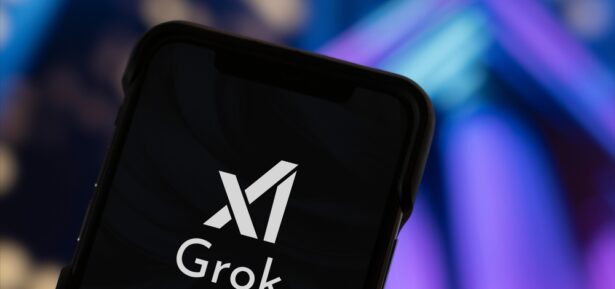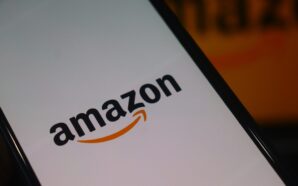
(Photo Source: stuff.tv)
What was the first cell phone?
The communication revolution elevated the way we know tech all thanks to one of the biggest communication inventions in history, the cell phone. We take a trip through time for a history lesson the revolution of the cell phone.
The first cell phone was known as the car phone was created in 1973 and the original car phone weight around 80 pounds. In 1947 an engineer working for Bell Labs imagined creating a network for their car phones working with a system that a call would bounce uninterrupted between “cells” of coverage but at the time the technology and infrastructure for this system didn’t exist.
The initial system was so limited only a limited number of people could use this service at a given time. The limitation of users and popularity led to a surge in demand with people on 5 and 10-year waiting lists. The systems were so limited in capability that the user would wait up to 30 minutes to place a call.
This changed in 1973 thanks to the Motorola engineer, Martin Cooper, when he started to develop one of the first cellular infrastructures. It took Motorola 10 years and $100 million investment until they were able to release the first handheld cell phone to the public in 1983 known as the DynaTAC 8000X.
It took them 10 years to create a viable cell phone because they needed to work on building the cellular infrastructure that was required for the phone to operate. Not to mention they didn’t have to worry about the competition as they were the only ones offering cell phones to the public at the time, driving up demand and prices. The original DynaTAC 8000X cost $3,995 (roughly $10,000 in today’s economy) that required to be charged for 10 hours and only held the battery life of 35 minutes.
IBM was the next company to join the cellular revolution in 1994 with their cell phone, IBM Simon. The IBM Simon model was one of the first cell phones with capabilities that are featured in modern-day cell phones being the world’s first touchscreen phone, the first smartphone, and the first phone to feature “apps.” In 1994 it cost around $1,099 and $1,800 with inflation.
Motorola made cell phone history a second time, creating the world’s first flip phone in 1996 called Motorola StarTAC. Blackberry created its first phone with full-text keypad and apps in 2002 called the BlackBerry 5810.
T-Mobile released the Sidekick phone in 2002 and was one of the most popular T-Mobile phones, offering several variations years after the first release. Nokia broke the record for the best-selling phones of all time in 2002 with the Nokia 1100.
Motorola launched its most iconic and easily recognizable phones in 2004, the Motorola Razr V3, which was one of the smallest flip phones offered at the time. Apple entered the cellular revolution in 2007 with the groundbreaking release of the first iPhone. The iPhone inspired the whole cellular phone market by being one of the only phones on the market to feature phones with minimal buttons and is all touchscreen, forming what is the most common phone that can be found on the market.
In May of 2007, BlackBerry released one of their most popular phone model called the BlackBerry Curve 8300 and the iPhone was available to the public shortly after in June 2007. Apple sold more than 6 million units and introduced a new model every year. iPhone’s user interface forever changed the computer industry, mobile phones, and technology.
The first phone to run on the Android operating system, HTC Dream, was released in 2008 and Samsung released its first Galaxy GT-17500 phone in 2006. The search engine giant, Google, entered the cellular industry in 2016 with the Pixel that was designed completely by Google.
Though cell phones have come a long way in phone capabilities, the phone feature is the least used on cell phones to date. The future of the cell phone is unclear but the World Economic Forum says that implantable phones are on their way and should become commercially available by 2024.
-
Credit: Shutterstock Dubai’s dining scene has never been afraid of bold ideas—but the city’s newest culinary experiment might just...
-
Credit: Shutterstock Disney Brings Olaf to Life with AI-Powered Snowman Robot Disney has accomplished the unthinkable by transforming one...
-
Credit: Shutterstock Thirty years ago, before most people had ever heard the term “cybersecurity,” a Japanese anime depicted a...
-
Credit: Shutterstock Today, Apple announced the release of Digital ID, a new and safe method for American iPhone and...
-
Credit: Shutterstock Artificial intelligence (AI) is already a part of our everyday lives and is no longer a sci-fi...
-
Credit: Shutterstock In a digital age where even our doorbells are online, today felt like the internet collectively hit...
-
Credit: Shutterstock Spotify is making it even easier (and more fun) to get the perfect playlist going. The streaming...
-
Credit: Shutterstock When Matt and Maria Raine lost their 16-year-old son Adam to suicide this past April, they were...
-
Credit: Shutterstock At its Made by Google 2025 event, Google pulled back the curtain on its latest foldable device,...
-
Credit: Shutterstock Paralyzed Woman Stuns the World Using Elon Musk’s Neuralink Chip In an awe-inspiring moment that blends science...
-
Credit: Shutterstock What’s on your mind today? Chances are, you’re not alone if you’ve turned to ChatGPT for answers....
-
Credit: Unsplash Japan Is Living In the Future Japan just broke the internet speed record by reaching 1.02 petabits...



















